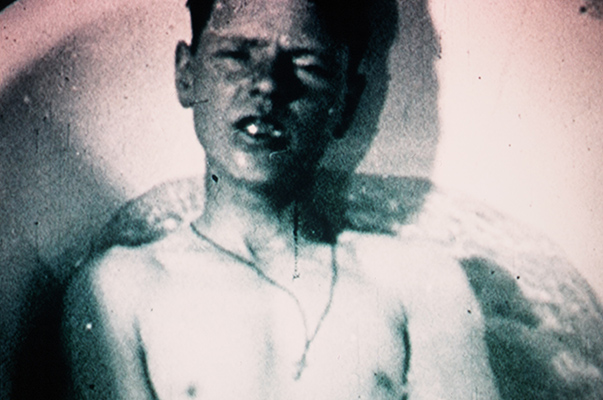“For us the past does not exist, nor does nostalgia, only the present does.” Yervant Gianikian and Angela Ricci Lucchi are pioneers of an avant-garde cinema that departs from found footage and the cinematic ready-made, as they work with lost and salvaged images from archives, above all those documenting colonialism and the wars of the twentieth century. Working together since the early seventies, their films are overtly political in nature—meditations on the way violence and terror have come to shape the present and our imaginary, and counter-ideological calls for universality in history. They possess their images as scholars and collectors just as much as they are possessed by them. They re-film everything they use in their work, steeping those images in colors and manipulating them into sequences, thus folding past into presence.
Triptych of the 20th Century is a five-channel video installation that is built from three parts: The Wounded Body, To the Defeated, and Terrorism. Together, these three parts show the consequences and horrors of war. The one-channel projection The Wounded Body examines the direct effect of war on the human body by showing a close-up of a brain surgery, but the artists also zoom in on the less visible psychological effects of war, like nervous disorders. To the Defeated is a two-channel projection that places opposing images side by side. On the left-hand side, a woman is cooking duck in a hyper-modern kitchen—a typical image of American post-war consumerism—while on the right-hand side, we see images of people devastated by hunger due to war. The controversial title points to the cause of the difference: the “winners of history” are here juxtaposed with those whose defeat was terminal. The third part, Terrorism, also consists of two projections. They show the downward spiral of economic deprivation and cultural destruction that people get trapped in during war. The images show the effects of years of hunger and homelessness, and people turning into ghosts of themselves. These pictures are juxtaposed with images of various religious motifs, suggestive of the role of institutionalized belief in provoking as well as com-pensating for the actual violence.
Yervant Gianikian, Angela Ricci Lucchi, born 1942 in Italy, live and work in Milan

